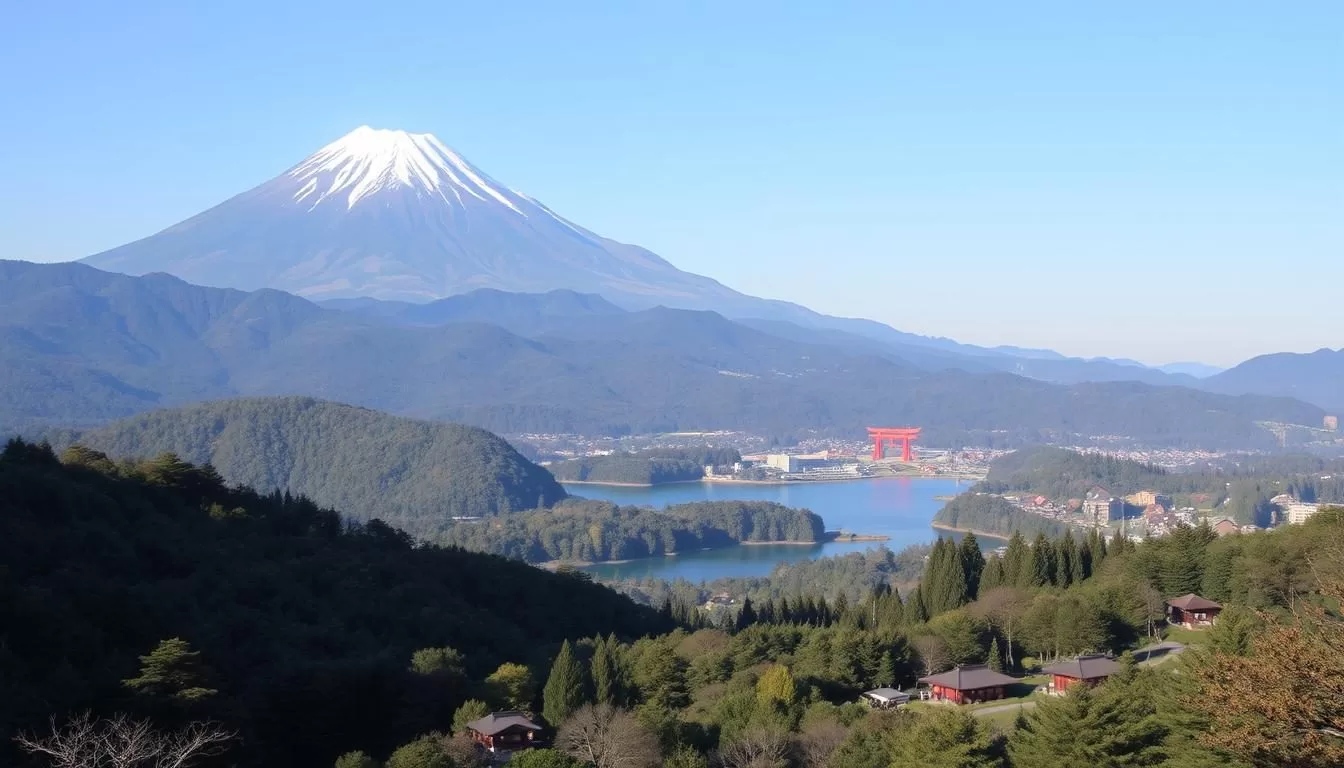✓ Accommodations ✓ Flights ✓ Rental Cars ✓ Tours & Activities
Welcome to the Chūbu Region, a captivating blend of ancient traditions and breathtaking landscapes that will leave you enchanted.
This diverse and culturally rich area of Japan is a treasure trove of unforgettable experiences, from snow-capped mountains and traditional villages to vibrant festivals and rejuvenating hot springs.
As you explore this central region, you’ll discover a wealth of culture and history, with numerous places to visit and things to do that cater to all interests.
Whether you’re a nature enthusiast, culture buff, foodie, or history lover, the Chūbu Region has something for everyone, making it a must-visit destination on your travel itinerary.
Discovering the Heart of Japan
As you journey through Japan, you’ll find that the Chūbu Region is a hidden gem that offers a unique blend of traditional culture and breathtaking landscapes. Located at the heart of the country’s main island, Honshu, this captivating region is sandwiched between the Kanto and Kansai regions, making it an ideal destination for travelers.
Where is the Chūbu Region?
The Chūbu Region encompasses nine prefectures: Aichi, Fukui, Gifu, Ishikawa, Nagano, Niigata, Shizuoka, Toyama, and Yamanashi. This centrally located area is characterized by dramatic mountain ranges, including the Japanese Alps, making it a paradise for nature lovers and outdoor enthusiasts.
Why Visit Chūbu?
- Experience an authentic glimpse into traditional Japanese culture, which is sometimes harder to find in more modernized metropolitan areas of the country.
- Enjoy a perfect balance of natural beauty, historical significance, and cultural experiences, with plenty of opportunities to explore beyond the typical tourist routes.
- Marvel at the diverse geography, ranging from coastal areas along the Sea of Japan to mountainous landscapes, including the majestic mountains that define the region.
Visiting the Chūbu Region is like stepping into a different era, where you can experience the changing seasons of Japan in all their glory, from cherry blossoms in spring to vibrant autumn foliage, summer festivals, and snow-covered winter wonderlands, making it an ideal place to visit any time of the year.
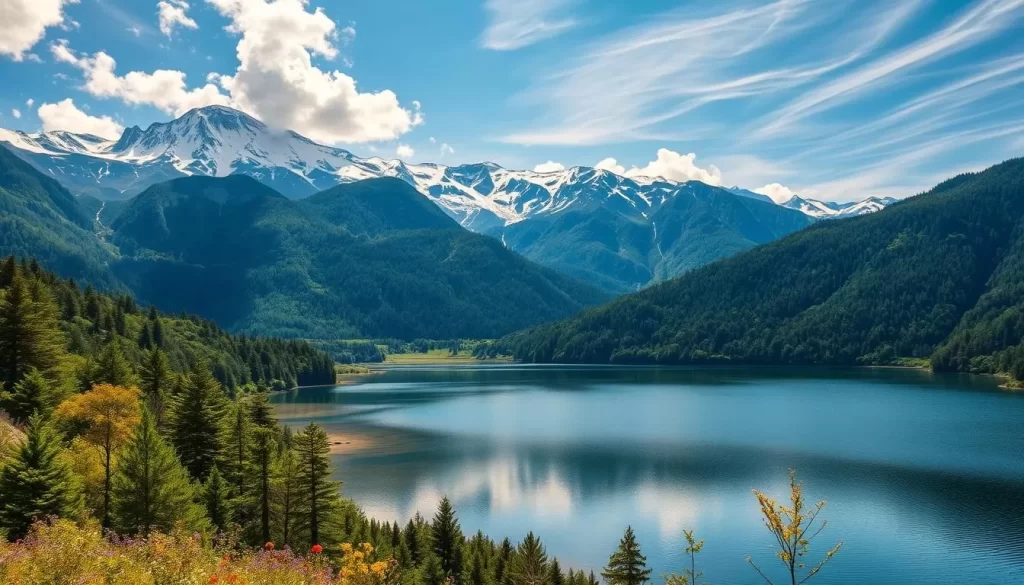
Explore Traditional Villages and Architecture
Step into the past and experience the traditional Japanese way of life in the villages of Chūbu. This region is home to some of Japan’s most well-preserved traditional villages and architecture, offering a unique glimpse into the country’s rich cultural heritage.
Shirakawago and Gokayama’s Gassho Houses
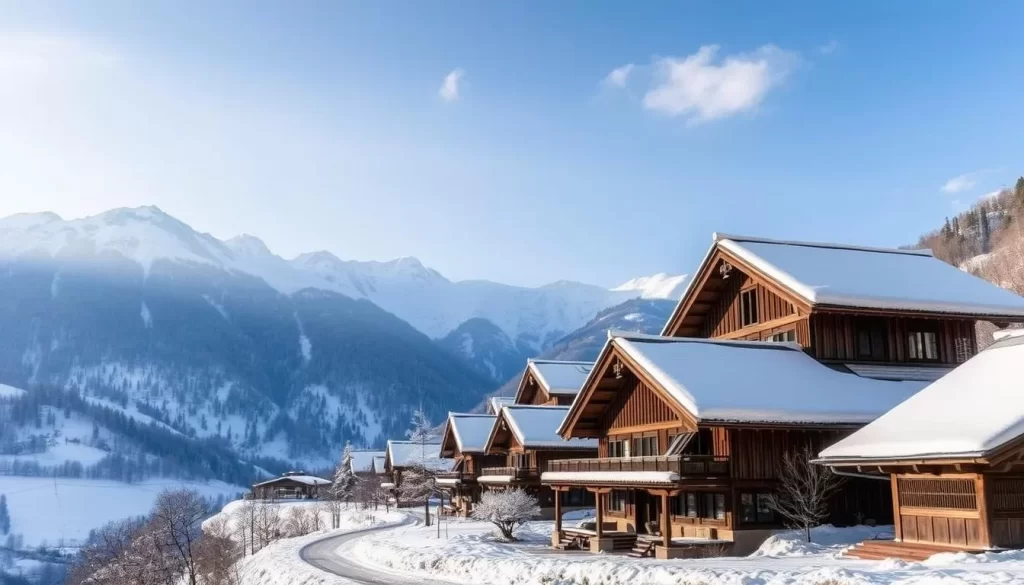
Shirakawago and Gokayama are UNESCO World Heritage Sites famous for their gassho-zukuri farmhouses. These traditional houses, some over 250 years old, feature steep thatched roofs designed to withstand heavy snow. Local families continue to inhabit these houses, maintaining centuries-old ways of life and crafts.
In Gokayama, you can participate in a washi paper-making workshop, a tradition that has been practiced for over 1,200 years, and take home your handmade creations as unique souvenirs.
Tsumago Post Town
Tsumago Post Town is a perfectly preserved glimpse into Edo-period Japan, with its meticulously maintained wooden houses and stone-paved streets. The town is located deep in the Kiso Mountains, giving it a stunning backdrop and an ancient feel. Walking through Tsumago feels like traveling through time, as the town has strict regulations to maintain its authentic historical atmosphere.
Shikemichi Historic District in Nagoya
For a taste of traditional architecture in an urban setting, visit the Shikemichi Historic District in Nagoya. This area, originally established as a merchant town around Nagoya Castle, features renovated old folk houses now housing stylish cafes and boutiques. It’s a unique blend of traditional and modern, located just 15 minutes from Nagoya Station.
These villages and districts showcase the ingenuity of traditional Japanese architecture, which harmoniously blends with the natural environment and adapts to local climate conditions, such as the heavy snowfall in Shirakawago and Gokayama.
Experience Japanese Cultural Traditions
Immerse yourself in the rich cultural heritage of Japan’s Chūbu Region. The region offers numerous opportunities to engage with traditional Japanese culture, from renting a kimono to participating in hands-on crafts workshops.
Try on a Kimono in Kanazawa
In Kanazawa’s picturesque Higashi Chaya District, you can transform your sightseeing experience by renting a traditional kimono. Complete with professional dressing assistance and hair styling, you’ll be able to stroll the historic streets as people have done for centuries.
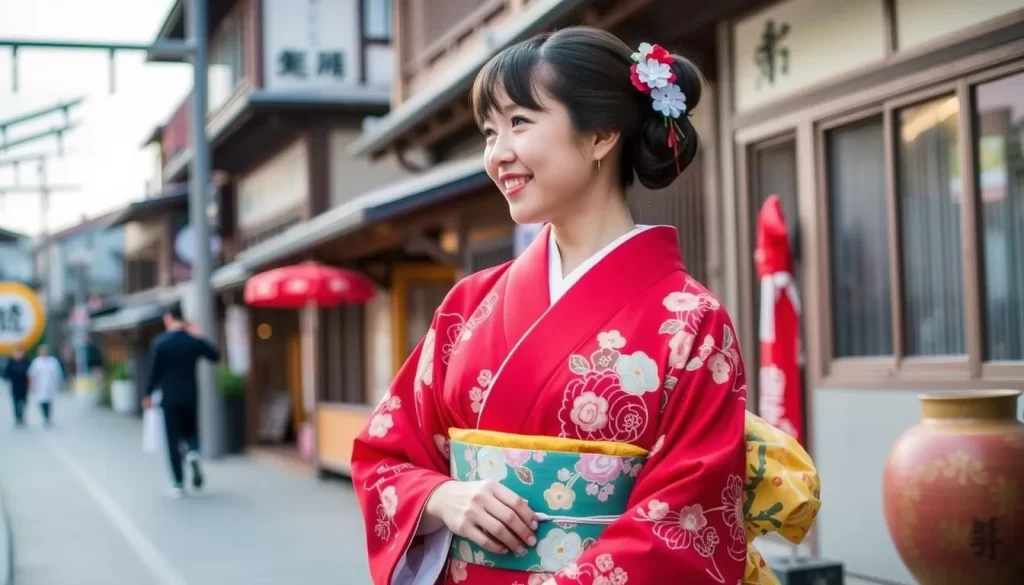
Make Washi Paper in Gokayama
At Gokayama, participate in a hands-on washi paper-making workshop, learning techniques that have been passed down through generations for over a millennium. You’ll create your own unique souvenirs, taking home a piece of traditional Japanese craftsmanship.
Gold Leaf Crafting at Hakukokan Museum
Visit the Hakukokan Museum in Kanazawa to try your hand at gold leaf application, a meticulous craft for which the city produces 99% of Japan’s supply. Decorate chopsticks or other items with this precious material, and don’t miss the opportunity to taste gold leaf ice cream at the museum’s café.
These interactive cultural experiences offer a deeper connection to Japanese traditions than mere observation, allowing you to appreciate the time, skill, and attention to detail that characterize traditional Japanese craftsmanship. Many shops throughout the region offer workshops where you can learn other traditional crafts, providing numerous ways to engage with local culture.
Chūbu Region, Japan: Best Things to Do for Nature Lovers
Nature enthusiasts will find the Chūbu Region a treasure trove of exciting experiences and stunning natural beauty. From majestic mountains to serene lakes and dramatic gorges, this region is a paradise for those who cherish the great outdoors.
Kurobe Gorge and Torokko Train
The Kurobe Gorge Torokko Train offers an unforgettable 80-minute journey through Japan’s deepest V-shaped ravine. As you travel through this breathtaking landscape, you’ll witness untamed wilderness and spectacular seasonal colors, especially during autumn. The train is a must-experience for nature lovers, providing a unique perspective on the region’s natural beauty.
Shinhotaka Ropeway Views
For panoramic views of the Northern Japanese Alps, ride the Shinhotaka Ropeway in Chubu Sangaku National Park. The observation deck on Mt. Nishihotakadake offers breathtaking vistas, sometimes even above a sea of clouds, making it a truly unforgettable experience.
The Five Lakes of Fuji
The Fuji Five Lakes region is a haven for outdoor enthusiasts, offering opportunities for camping, fishing, and hiking. Lake Kawaguchiko is the most accessible of the five lakes and is an excellent base for exploring the area. You can also visit the nearby Fuji-Q Highland amusement park, known for its world-record-breaking roller coasters.
The Chūbu Region’s diverse landscapes transform with the seasons, from cherry blossoms in spring to vibrant foliage in autumn, and snow-covered landscapes in winter. Whether you’re interested in hiking, sightseeing, or simply enjoying the views, this region has something for everyone.
Soak in Rejuvenating Hot Springs
Soaking in natural hot springs, or onsen, is a centuries-old tradition in Japan’s Chūbu Region. This cherished custom involves specific etiquette, most notably bathing in the nude, and is a significant part of Japanese culture.
Gero Onsen Resort Experience
Gero Onsen is one of Japan’s three finest hot spring destinations, recognized since the Edo period. It offers a variety of bathing experiences, from luxurious ryokan with private baths to public bathhouses where you can mingle with locals. Staying at an onsen resort in Gero allows you to fully immerse yourself in Japanese bathing culture, enjoying traditional meals and soaking in different types of therapeutic mineral waters throughout your stay.
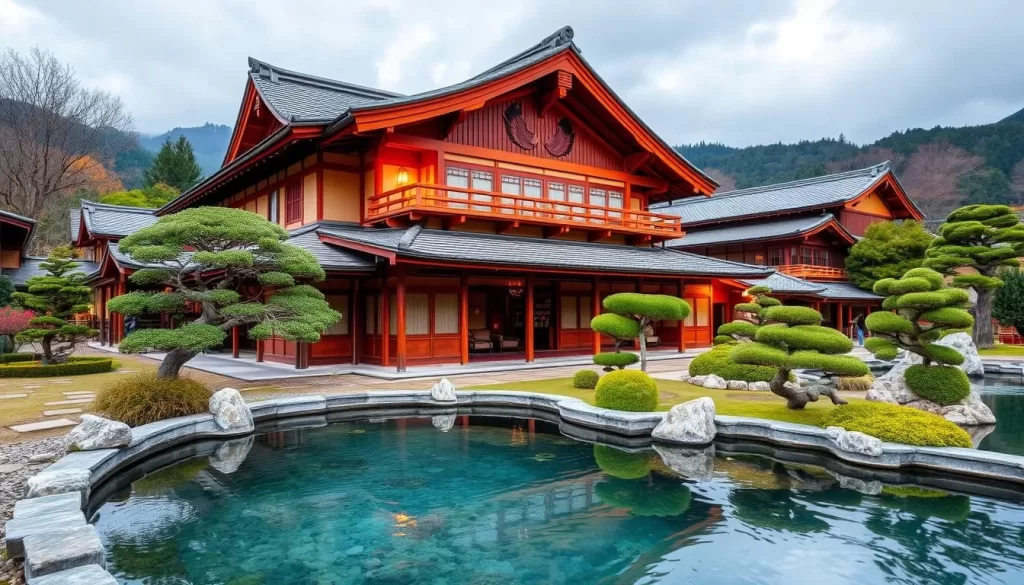
Unazuki Onsen’s Clear Waters
Unazuki Onsen, located near Kurobe Gorge, is renowned for having some of the clearest water in Japan. The onsen is said to promote beautiful skin with a smooth sensation the locals call “tsurutsuru.” You can soak in open-air baths while enjoying views of the spectacular gorge, making for a truly unforgettable experience.
Japanese Foot Baths (Ashiyu)
For those who prefer a more modest experience, Japanese foot baths, or ashiyu, provide a way to enjoy the therapeutic benefits of hot spring water without full immersion. Simply remove your shoes, roll up your pants, and soak your feet while relaxing on a bench. Many onsen towns in the region have free public foot baths located on street corners, in parks, or at train stations, making them perfect spots to rest and rejuvenate during a day of sightseeing.
The mineral composition varies between different hot springs, with each offering unique therapeutic properties. Some are said to help with skin conditions, while others aid in relieving joint pain or improving circulation, adding a wellness dimension to your travel experience in the Chūbu Region’s onsen town.
Marvel at Historic Castles and Temples
As you explore the Chūbu Region, you’ll discover an array of historic castles and temples that showcase the country’s architectural and spiritual traditions. The region is home to some of Japan’s most impressive historical structures, including magnificent castles and temples that highlight the country’s cultural and architectural achievements.
Nagoya Castle
Nagoya Castle, originally built in 1612 to secure the strategic Tokaido route, stands as a symbol of feudal power with its meticulously restored buildings and famous golden dolphins (kinshachi) adorning the roof. You can explore the castle grounds to appreciate not only the impressive main keep but also the beautiful gardens, moats, and walls that make this one of Japan’s most important historical landmarks.
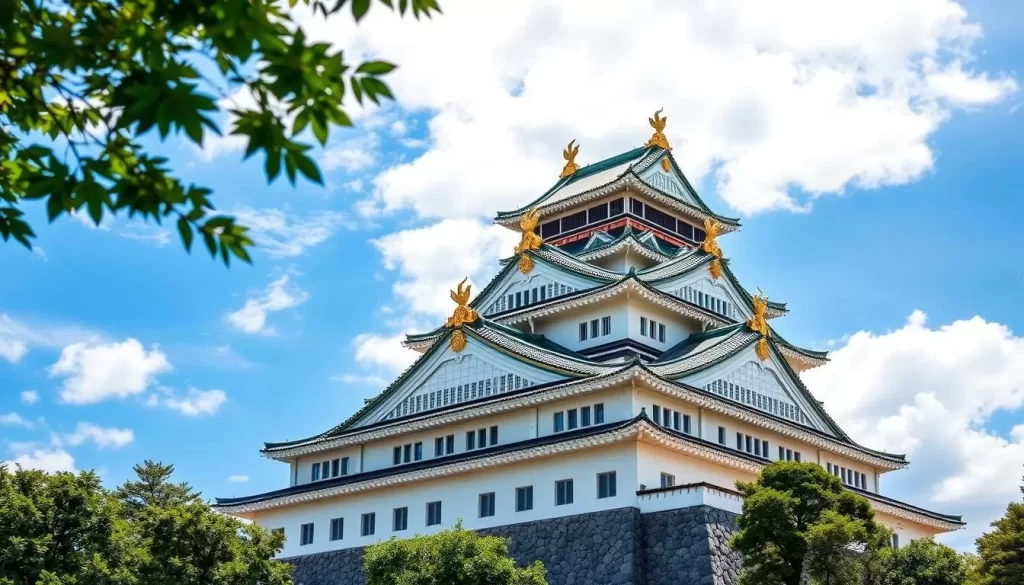
Myoryuji “Ninja-dera” Temple
The mysterious Myoryuji Temple in Kanazawa, commonly known as “Ninja-dera” (Ninja Temple), fascinates visitors with its ingenious defensive features, including hidden doors, secret staircases, and trap floors designed to protect the town during turbulent times. A guided tour of Myoryuji reveals the temple’s maze-like interior, offering insight into the strategic thinking of people during Japan’s feudal period.
Seidaiji Temple’s Buddha Wall
At Seidaiji Temple in Katsuyama City, you can marvel at the awe-inspiring sight of more than 1,200 Buddha statues arranged along a wall surrounding a massive 17-meter seated Great Buddha statue, creating an overwhelming spiritual atmosphere. Visiting in the early morning is recommended as there are fewer visitors, allowing for a more serene experience.
These historical structures not only showcase remarkable craftsmanship but also provide windows into different aspects of Japanese history, from military strategy to religious devotion and artistic achievement. As you visit these sites, you’ll gain a deeper understanding of the region’s rich cultural heritage.
Stroll Through Japan’s Most Beautiful Gardens
As you wander through the serene landscapes of Japan, you’ll discover the country’s most breathtaking gardens. The Chūbu Region is home to some of Japan’s most beautiful gardens, with Kenrokuen Garden in Kanazawa being a standout example.
Kenrokuen Garden in Kanazawa
Kenrokuen Garden is considered one of Japan’s Three Most Beautiful Gardens, and for good reason. This stroll garden embodies the six essential attributes of a perfect landscape garden: spaciousness, seclusion, artifice, antiquity, watercourses, and panoramas. As you stroll through, you’ll notice the harmonious arrangement of ponds, streams, and teahouses that create different scenic views with each step.
Japanese Garden Traditions
Japanese gardens are designed to be enjoyed in all seasons and at different times of day. In winter, Kenrokuen Garden transforms into a magical landscape, with the famous pine trees protected by snow suspenders (yukizuri) to prevent branches from breaking under heavy snow. The garden’s iconic Kotojitoro lantern is another must-see feature, symbolizing the beauty of Japanese garden design.
Understanding the principles behind Japanese garden design enhances your appreciation of these living works of art. With each visit, you’ll discover new perspectives and details to appreciate, making them worth revisiting throughout your stay.
Experience Vibrant Festivals and Traditions
The Chūbu Region is home to some of Japan’s most beautiful and captivating festivals, showcasing the country’s deep-rooted traditions. These events are not only a treat for the eyes but also offer a chance to experience the local culture firsthand.
Takayama Festival and Museum
The Takayama Festival is considered one of Japan’s three most beautiful festivals, held twice yearly in spring and autumn. The festival features elaborately decorated yatai (floats) adorned with intricate carvings and mechanical marionettes. If you miss the actual festival, the Matsuri no Mori museum displays life-sized replicas of the floats and offers daily performances.
Gujo Odori Dance Festival
The Gujo Odori Dance Festival in Gujo City is a remarkable 30-night celebration that has continued for over 400 years. The highlight is the “tetsuya odori” (dancing all night) from August 13-16, where locals and tourists dance together until daybreak, creating a memorable night to remember.
Toyohashi Gion Festival’s Hand-Held Fireworks
The Toyohashi Gion Festival features the spectacular tezutsu hanabi (hand-held fireworks), where participants hold bamboo tubes filled with gunpowder under their arms, creating a dramatic display of bravery and tradition. This unique spectacle is a must-see for anyone visiting the region during the festival season.
These festivals not only showcase the region’s rich cultural heritage but also provide a unique opportunity for visitors to interact with the local people and experience the community’s spirit.
Discover Unique Natural Phenomena
Japan’s Chūbu Region boasts extraordinary natural phenomena that will leave you in awe. From breathtaking snow corridors to mesmerizing rice terrace illuminations, the region offers unforgettable experiences.
Yuki no Otani Snow Corridor
One of the most spectacular winter wonders is the Yuki no Otani Snow Corridor on the Tateyama Kurobe Alpine Route. This natural snow canyon features snow walls reaching up to 20 meters high, creating a surreal winter landscape.

Senmaida Rice Terraces Illumination
As night falls, the Shiroyone Senmaida Rice Terraces transform into a magical display of lights during the Aze no Kirameki event. The 1,004 rice paddies are outlined with 21,000 LED lights, creating a breathtaking scene against the backdrop of the Sea of Japan.
These unique natural phenomena showcase the region’s incredible beauty, making it a standout destination in the world. Whether you’re marveling at the snow or enjoying the illuminated rice terraces, the Chūbu Region promises an unforgettable experience.
Savor Regional Culinary Delights
From the mountains to the coast, the Chūbu Region’s culinary delights are as varied as they are delicious. The region’s diverse geography has given rise to a rich culinary heritage, with each area offering its unique flavors and specialties.
Hida Beef in Takayama
In Takayama, you can savor the melt-in-your-mouth texture of Hida beef, a premium Japanese wagyu that rivals the more famous Kobe beef. Enjoy it as shabu-shabu, thinly sliced and briefly cooked in hot broth, or as yakiniku, grilled to perfection. Pair it with some local sake for an unforgettable dining experience.
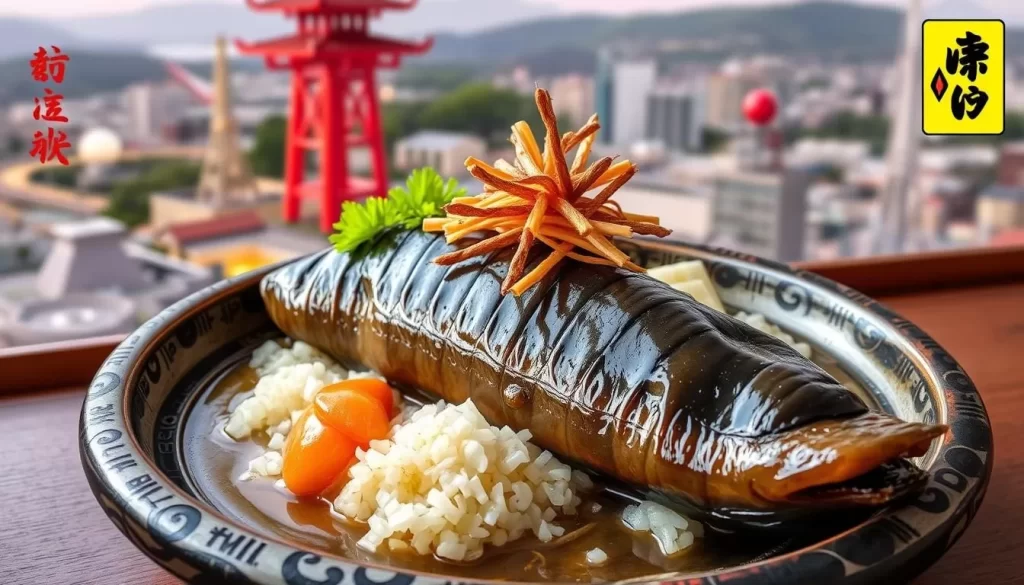
Hitsumabushi Eel Dish in Nagoya
Nagoya’s signature dish, Hitsumabushi, presents grilled freshwater eel (unagi) atop rice in a special way—eaten in three stages: first plain, then with condiments like wasabi and green onions, and finally with dashi broth poured over it. This offers three distinct flavor experiences from one dish, showcasing the versatility of Japanese cuisine.
Toyama’s Fresh Seafood
Along Toyama Bay, renowned for having some of Japan’s freshest seafood, try kanburi-don, featuring winter yellowtail sashimi artfully arranged like a flower atop a bowl of rice. For an authentic experience, visit Uoichiba Shokudo in Himi Fishing Port, where the fish is incredibly fresh and the presentation is as beautiful as it is delicious.
The Chūbu Region’s culinary landscape is not just about these standout dishes; each prefecture has its own specialty foods worth exploring, from Shizuoka’s sakuraebi (sweet cherry shrimp) to Ishikawa’s jibuni (duck stew) and Fukui’s Echizen crab. With many restaurants priding themselves on using locally sourced, seasonal ingredients, visitors can truly taste the essence of each area and connect with its agricultural and culinary traditions.
Explore Charming Cities and Towns
Discover the authentic charm of Japan by exploring the quaint cities and towns of the Chūbu Region. The area is dotted with charming urban areas that offer a glimpse into traditional Japanese life, each with its own distinct character and atmosphere.
Takayama’s Old Town
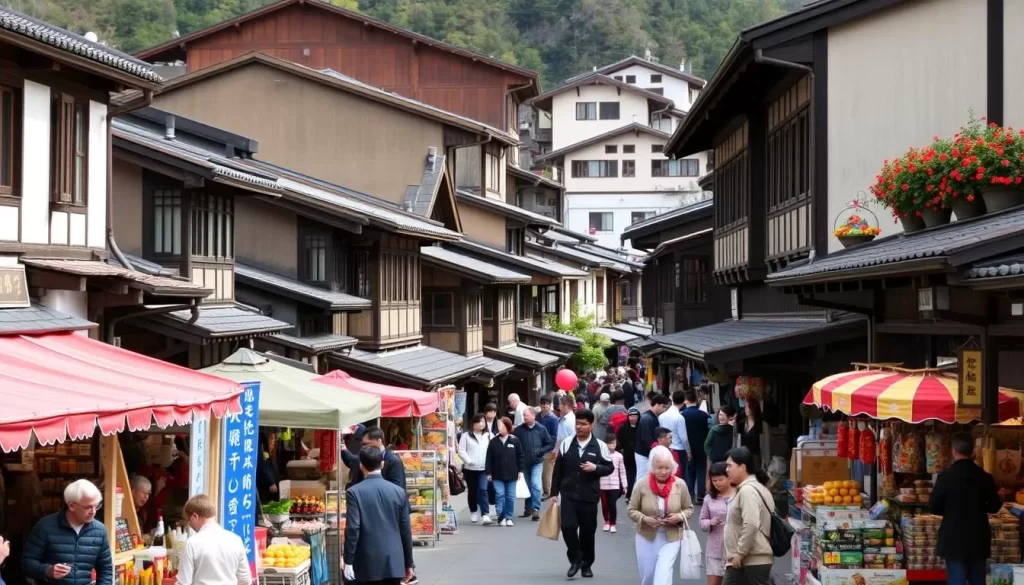
Takayama’s beautifully preserved Old Town features wooden merchant houses dating back to the Edo period. The Miyagawa Morning Market is held daily, where local farmers and craftspeople sell their wares, creating a lively atmosphere that has remained largely unchanged for centuries. As you wander through Takayama’s narrow streets, you’ll find sake breweries, traditional craft shops, and restaurants serving local specialties like Hida beef.
Kanazawa’s Higashi Chaya District
Kanazawa’s Higashi Chaya District transports visitors to the world of geisha with its well-preserved wooden teahouses. During the Edo period, geisha would perform Japanese arts for guests in these teahouses. Today, some of these historic teahouses are open to the public, allowing you to experience traditional Japanese architecture while enjoying matcha tea and wagashi (Japanese sweets).
Atami’s Hidden Alleys
In the seaside resort town of Atami, venture beyond the main shopping streets near the station to discover hidden alleys with a retro atmosphere. These labyrinthine passages, known mainly to locals, offer a more authentic experience of this popular hot spring destination. You’ll find yourself in a quiet, nostalgic world, far from the bustle of the station area.
These charming urban areas provide perfect bases for exploring the surrounding region while offering their own attractions, from historical sites and museums to local shopping and dining experiences that connect visitors with local culture.
Planning Your Visit to the Chūbu Region
The Chūbu Region is a treasure trove of experiences, but a successful trip demands some strategic planning. To make the most of your visit, consider the best time to go and the most convenient travel options.
Best Time to Visit
The best time to visit depends on your preferences—spring for cherry blossoms, summer for festivals, autumn for foliage, and winter for snow activities and hot springs.
Getting Around
Train travel is efficient, with the Japan Rail Pass offering good value for multiple areas. Local bus services connect to more remote destinations. For rural areas, consider renting a car for flexibility.
Recommended Itineraries
A 5-day trip could include Day 1 in Nagoya, Days 2-3 in Takayama, and Days 4-5 in Kanazawa, with travel times ranging from 45 minutes to 2 hours by train or bus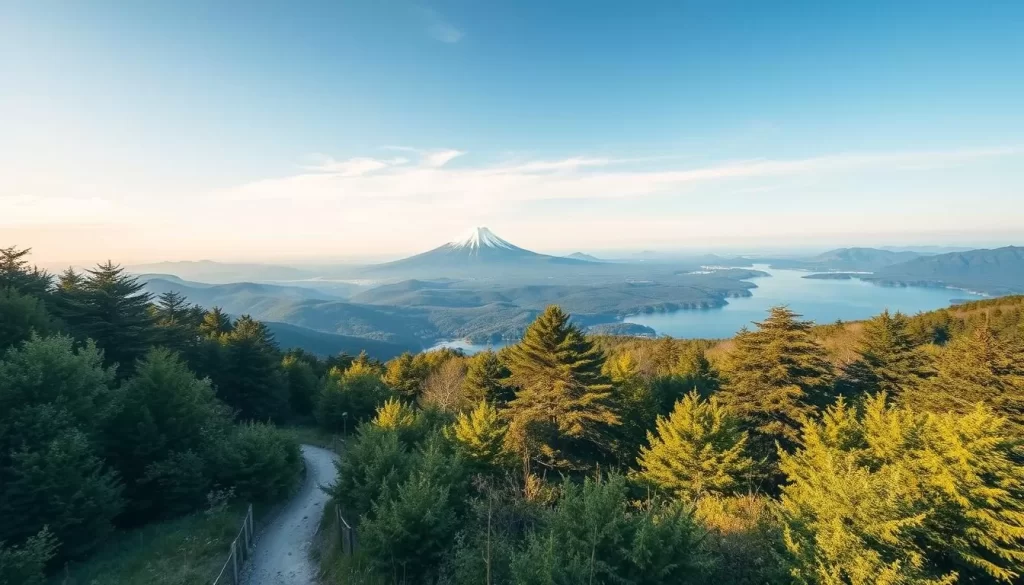
Conclusion
The Chūbu Region is more than just a destination; it’s an immersive experience that showcases the essence of Japan. With its incredible diversity of experiences, you’ll discover a perfect blend of natural beauty and rich cultural heritage. From the snow-capped Japanese Alps to the coastal areas along the Sea of Japan, Chūbu offers a comprehensive Japanese experience that goes beyond typical tourist destinations.
You’ll find plenty of places to explore, from historic villages to vibrant modern cities, each offering a unique aspect of Japanese culture. Whether you’re soaking in an onsen, savoring regional delicacies, or participating in a centuries-old craft workshop, the memories you create in Chūbu will stay with you long after your trip ends. With its central location, Chūbu works perfectly as part of a larger Japanese itinerary, making it a great addition to your travel plans, offering a lot to explore in the region and deepen your understanding of Japanese culture.
The above is subject to change.
Check back often to TRAVEL.COM for the latest travel tips and deals.
